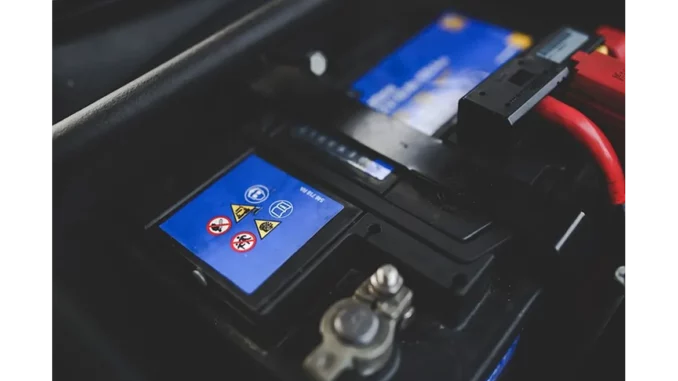
Summary
Honeywell Advances EV Safety with Cutting-Edge Technologies
In a significant stride towards enhancing electric vehicle (EV) safety and production efficiency, Honeywell has unveiled a suite of technologies developed in collaboration with Titan Advanced Energy Solutions. These advancements promise to revolutionise EV manufacturing by addressing critical safety challenges and improving quality assurance processes. Andrew Carter, a senior engineer at Honeywell, detailed the innovations, including a pioneering ultrasound-based battery interrogation system and an advanced lithium-ion battery safety sensor, positioning Honeywell at the forefront of the industry.
Main Article
Revolutionising Battery Manufacturing
In the rapidly evolving landscape of electric vehicles, Honeywell is pioneering safety and efficiency innovations. During a recent interview at Honeywell’s headquarters, Andrew Carter, a senior engineer, illuminated the company’s latest technological breakthroughs. “We’re in a pivotal moment for the EV industry,” Carter noted, emphasising the urgency of addressing safety concerns.
Central to Honeywell’s recent advancements is its partnership with Titan Advanced Energy Solutions. This collaboration has introduced a groundbreaking ultrasound-based battery interrogation system, integrated into the Honeywell Battery Manufacturing Excellence Platform (MXP). Carter described this development as a “game-changer” for battery production, offering real-time, in-line analysis of battery quality—a capability that traditional methods lack.
The innovative ultrasound scanner is designed to detect manufacturing defects invisible to conventional testing methods. “This means every battery cell can be thoroughly tested, ensuring faster tracing of defects and significantly improving process efficiency,” Carter explained. The technology is particularly beneficial for early-stage gigafactories, which face the challenge of scaling up production without compromising on quality and safety. By enhancing the visibility manufacturers have into their battery production lines, Honeywell is helping to build trust and ensure each battery meets the highest safety standards.
Enhancing Safety with Sensor Technology
Another significant innovation by Honeywell is the introduction of the Battery Safety Electrolyte Sensor (BES), a cutting-edge lithium-ion battery safety sensor for EVs. Carter’s enthusiasm was evident as he detailed its capabilities. The BES employs lithium-ion Tamer electrolyte gas detection technology to identify early signs of a potential battery fire, providing warnings 5 to 20 minutes before a fire could start. This early detection is crucial for preventing thermal runaway, a dangerous and potentially catastrophic event.
The importance of such technology is immense. By identifying gases released by a failing battery cell before thermal runaway begins, the BES allows operators to act swiftly to prevent fires. “This not only enhances vehicle safety but also helps manufacturers comply with global safety regulations, such as the Global Technical Regulation No. 20 for Electric Vehicle Safety,” Carter highlighted.
In a recent case study, the BES successfully detected early signs of battery failure, allowing operators to intervene and avert a potential disaster. “It’s technologies like these that make us confident in the future of EV safety,” Carter remarked with pride.
Broader Implications for the EV Industry
As the world accelerates towards electrification, the implications of Honeywell’s innovations extend beyond individual vehicles. Carter reflected on the broader impact, noting, “With these solutions, we’re reducing safety risks and creating greater transparency throughout the lifecycle of a battery.” These advancements not only enhance safety but also pave the way for more efficient and transparent manufacturing processes.
Carter expressed optimism about the potential of these technologies to support the growth of the EV industry. “Knowing that our work could potentially save lives and support the growth of the EV industry is incredibly fulfilling,” he said.
Detailed Analysis
Honeywell’s recent developments are emblematic of a broader trend in the EV sector: the emphasis on safety and quality assurance as production scales up. As the industry grows, the need for reliable safety technologies becomes increasingly critical. Honeywell’s integration of advanced diagnostic tools represents a shift towards more sophisticated and proactive safety measures, which could set new industry standards.
The collaboration with Titan Advanced Energy Solutions underscores a strategic approach to innovation, leveraging external expertise to enhance internal capabilities. This partnership model is becoming increasingly common in the tech industry, as companies seek to combine strengths and accelerate development timelines.
The implementation of the Battery Safety Electrolyte Sensor (BES) also highlights the industry’s focus on preemptive safety measures. By offering early detection of battery issues, Honeywell not only addresses immediate safety concerns but also helps manufacturers navigate complex regulatory environments. This proactive approach aligns with broader trends in the automotive industry, where safety and compliance are paramount.
Further Development
Looking ahead, Honeywell’s technological advancements may catalyse further innovation and regulatory changes within the EV sector. As these technologies are adopted more widely, there may be shifts in manufacturing practices and safety standards, prompting other companies to follow suit.
Future developments could also include enhancements to the existing technologies, potentially expanding their applications beyond EVs to other sectors reliant on lithium-ion batteries. Additionally, as global demand for electric vehicles increases, the pressure on manufacturers to ensure safety and efficiency will likely drive further investment and research in this area.
Readers are encouraged to stay tuned for more insights and updates on the evolving landscape of EV technology, as Honeywell and other industry leaders continue to push the boundaries of what is possible in this dynamic field.

